INFORMATION
“The Return of” series started in 2013 is an installation work of a story created by Ozawa combining facts on a historical figure with fictional elements. The first work from the series was “The Return of Dr.N” in 2013, connecting two distant communities of Ghana and Fukushima by channeling the footsteps of a bacteriologist, Hideyo Noguchi. “The Return of Painter F” created in Indonesia in 2015 is a story of a painter modeled on Tsuguharu Foujita, whose life was buffeted by the World War II as a war painter. “The Return of J.L.” in 2016 was produced in the Philippines, which featured John Lennon. “The Return of K.T.O.” in 2016 was created in India featuring Kakuzo Okakura, also known as Tenshin Okakura. The latest work is “The Return of S.T.” in 2020 which deals with S.T., a modern-day figure associated with Hirosaki, Ozawa enlisted the cooperation of Iranian sign artisans and musicians.
WORKS
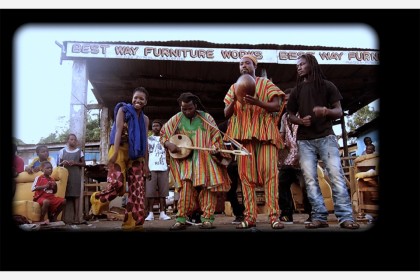
The creation of The Return of Dr. N lead Ozawa to Ghana, Africa, the land where Noguchi himself traveled to in order to study Yellow Fever, which also was the disease that subsequently took Noguchi’s life. Noguchi, despite suffering severe burns to the left hand at a young age, attained critical acclaim and international recognition through perseverance in his work, but was also subject to scrutiny for his occasional recklessness in his research and experimentation. Ozawa traced the footsteps of Noguchi in Ghana.
Blending fictional aspects and a personal take on Noguchi’s life, Ozawa created Dr. N, a reckless yet witty character whose livelihood extends between Japan and Africa. The life story of Dr. N, conjured by Ozawa, is depicted through the style seen on billboard paintings in the streets in Africa, which are created by artists in Ghana, based off of Ozawa’s drawings. Also to be presented is a transnational musical collaboration in the form of a song about Noguchi’s life, improvised and written by a Ghanaian musician, accompanied by a choir from Fukushima that sings the chorus section.
The installation, The Return of Dr. N consists of 8 canvases (250cm x 150cm each) and a video of the musical collaboration of the story of Dr. N. Ozawa connects two distant communities by channeling the footsteps of Noguchi. It is an attempt to present an alternative viewpoint to various unyielding issues and problems through art and societal involvement. His installation is created through the collaborative effort of locals in these two distant communities of Ghana and Japan.
The Return of Dr. N is also an artist questioning his role in facing the realities of Fukushima post the Great East Japan Earthquake in 2011. This piece invites the audience to see the past and present by fusing historical facts and fiction. It brings the viewer on a journey to witness Ghana, and Japan, and ultimately contemplate what Fukushima is today.
The Return of Dr.N was exhibited at Yokohama Creativecity Center, May 25 – June 9, 2013, in conjunction with the 5th Tokyo International Conference on African Development.
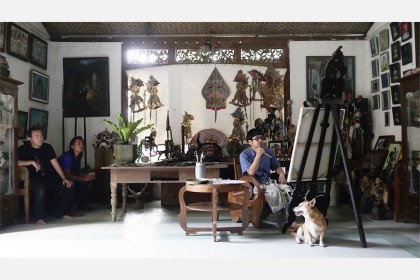
To develop his story for this exhibition, Ozawa began by researching the actual Japanese war painters. He used archival documents and other research materials to create a multi-perspective dialog that includes not only the Japanese point of view, but also the view of Indonesian art historians, painters, and musicians—a process that became collaborative throughout, from story development to the creation and completion of the final work.
It might be worth considering the similarities between the diverse systems of value that characterize our modern age and the situation of Painter F, who during the war years was obliged to move in step with a single point of view but after the war experienced a radical turn of mind. And, in our increasingly globalized world, for people living in Japan and Indonesia looking back on history with a reciprocal perspective, the act of creating a work that imagines “a past that might have been” may be a good way to deepen knowledge and understanding of the other, thus becoming a call for future new creativity and connection.
(Reference: Shiseido Gallery press release of The Return of Painter F)
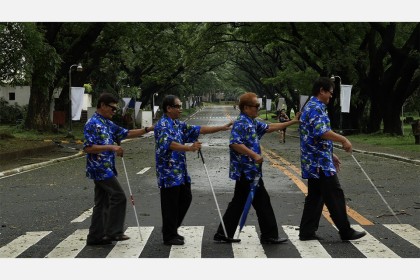
Patrick D. Flores, who is professor of Art Studies at the Department of Art Studies at the University of the Philippines, curator of the Vargas Museum in Manila and adjunct curator at the National Gallery Singapore, has mentioned about “The Return of J.L.” as “It is J.L. who reconfigures both the Philippines and Japan as sites of the political formation of subjectivities. This is a layered translation, mutating from disparate interventions. Such a dense ecology of relations offers a complexity to this project and encrusts the desire for a return not with the details of nostalgia but with the inscriptions of sympathies. There is a sadness that surrounds the performance of this return, an equivalent effort of the Philippine agency to reciprocate the inventiveness of a Japanese artist, and all released and then withdrawn by the figure of J.L, the exceptional trope of melancholy: figurative, transposing, missing.”
The lyrics Ozawa wrote refrain “He who dreams of an ideal world”, “He who’ll come back from a hundred deaths” several times. In this work, Ozawa tells a story of the man “he who dreams of an ideal world” even it may be impossible to achieve, and for that “He who”ll come back from a hundred deaths”, through real story about the historical figure, fictional elements, and also with the collaboration with various people.
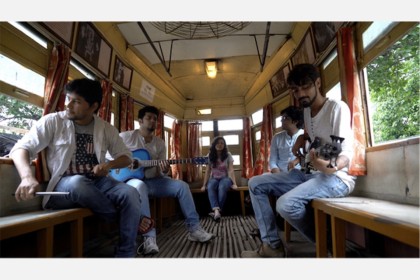
Ozawa visited Kolkata to tracing Okakura’s footsteps and created a story that Okakura returns to the near future world. Ozawa commissioned local billboard painters to paint based on his drawing and collaborated with local musician to make a video.
Rustom Baharucha, a director, writer, critic based in India who has cooperated in this work commented as below.
Having facilitatedThe Return of K.T.O. in Calcutta, where, arguably, the spirit of Okakura never left the city in the first place, can we anticipate “The Return of Tusyoshi Ozawa”himself? Or will he, like Okakura, get lost in the frenetic temporality of the global art world? He can one imagine even more challenging intercultural projects across location, history and culture where artists like billboard painters and local musicians from Accra, Jogjakarta, Manila, Calcutta, and beyond, can meet to create new cosmopolitical solidarities? While this may seem lika a Fantasy, The Return of K.T.O. enables one to imagine it in the first place.
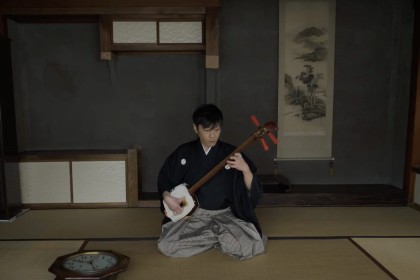
(Cited from Artist's official website)






